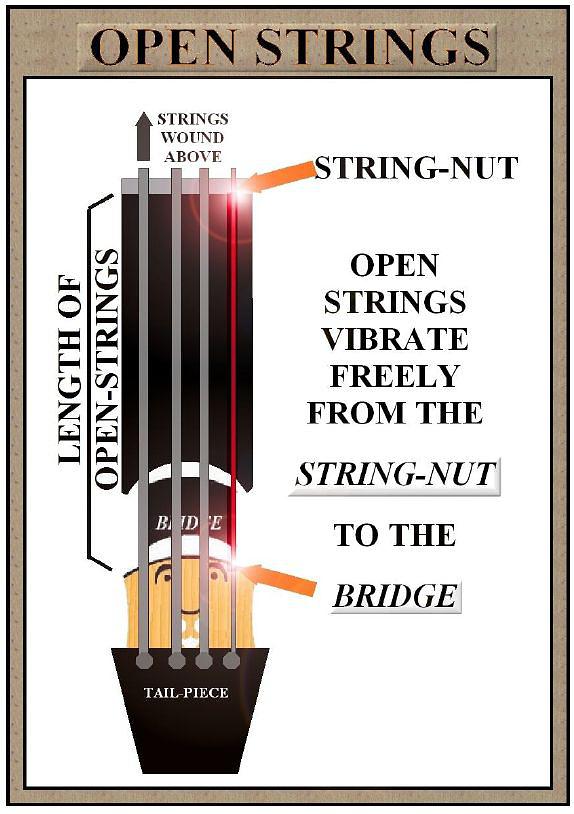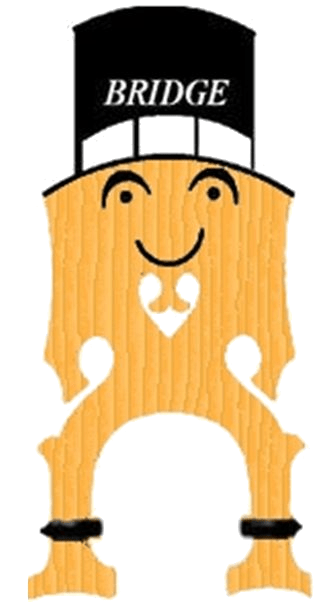
There is much more to learn about how sound-science principles work on stringed instruments and how to create different note frequencies. For now, you know the basics. Thanks again, Bridge and Peg!

It was my pleasure, Q. When it’s time to help teach everyone the skill of instrument tuning, I will make my re-turn.

By that time, everyone will have gained a lot of performance experience. See you later.
Q, I’m always glad to assist. When everyone is ready to learn bow-placement details, I will return with sound-production pointers.


I’m glad that Scroll is on his way back, since he plans to offer historical perspective about pitch notation in the format of an imaginative tale. Learning how pitches are notated on the staff, along with your Rhythm knowledge, gives you the information needed to successfully learn how to perform upcoming Pizzicato Exercises.
Certainly, Scroll has floated back by now. Let’s go enjoy his tale.

Potential and Kinetic Energy The R’s of Remembering Practice Purpose Music Staff Evolution
Music Clef Origins Scroll History Peg Information Bowed String Instrument History
Friction Bass Tuning Mechanism Modern-Day Violin Family Bridges Through the Ages



